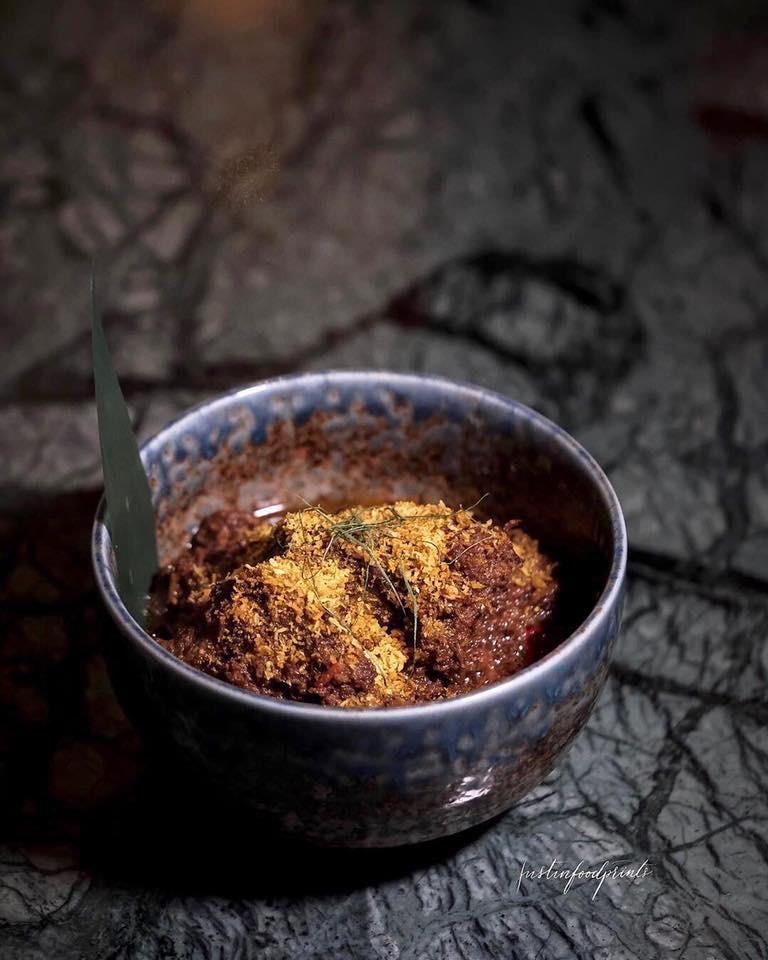While it may come naturally to most to pair wine with steak or pasta, one might be hard pressed to find the perfect pairing for satay, masala chicken or chu chee curry when the rule of thumb — red wine for red meat, white wine for white meat — doesn’t quite hold up anymore.
“Asian cuisines tend to be more sauce-heavy compared to Western cuisines,” explains Wolf Blass Brand Ambassador Catherine C Wong. “Additionally, meals in the region tend to be served family communal style with dishes all together, presenting a challenge for wine pairings by the course. By looking at the sauces, similarities in the dishes could help to identify a wine that will match well with the meal.”
Wong recommends picking out the key dominating flavour in the sauce and with that in mind, selecting a wine that will either complement with similar spices, such as a Shiraz, or a fruity white wine with lower alcohol level which will tame down spicy dishes. “The desired effect is to have a balanced palate when you have the sauce together with the wine, both amalgamating together without either one over-powering the other. That is how you find complementary flavours," she shares. "The result of the flavours, acidity and body should seamlessly be greater than the sum of its parts.”

The process of playing around to find the perfect pairing can be as fun as it is delicious. “I would recommend starting with your favourite dish and pairing it with different wines to get to the flavour balance that you like,” says Wong. “In fact, we advocate through our Wolf Blass Find Your Flavour campaign to be experimental with Asian dishes and wine pairing. Focus on the sauce as that dominates the Asian cuisine and I’m certain you can find your flavour with our Wolf Blass range of wines.”
Established in Australia's Barossa Valley in 1966, Wolf Blass has grown to become one of the world’s most awarded wineries; In November, it was named International Red Producer of the Year at the 2020 International Wine and Spirit Competition (IWSC) for the fourth time. To create the Wolf Blass Gold Label collection, its winemakers select the definitive varieties of the very best South Australian wine regions to produce progressive, elegant wines that showcase both regional and varietal excellence — ideal for pairing with food and just as great enjoyed on their own.
We take a look at four signature dishes from MICHELIN star restaurants in Singapore and the sauces that define their flavour to find the perfect match from Wolf Blass Gold Label wines.

Shisen Hanten
Two MICHELIN Stars, MICHELIN Guide Singapore 2019
Chen’s Mapo Tofu
Shisen Hanten’s signature Chen’s Mapo Tofu (Photo: Shisen Hanten) is an original family recipe that has spanned three generations, using dou ban jiang (chilli broad bean paste) that is specially fermented and aged in the Sichuan province for at least three years.
Each generation has added their own tweaks to the original recipe. “For his version of this dish, my grandfather actually used bean paste (tian mian jiang) and fermented black beans (dou chi) to better suit the milder palate of audiences in Japan,” says chef Chen Kentaro. His version, served at two-MICHELIN-starred Shisen Hanten and its Bib Gourmand spin-off Chen’s Mapo Tofu, is unabashedly fiery, but still complex in its flavours and deeply umami. The recipe also uses red Sichuan peppercorns that add to the distinctly piquant flavour unique to the cuisine.
Pair this with: Wolf Blass Gold Label Chardonnay
The Chardonnay is a medium to full-bodied textural wine with white peach and melon skin aromas and integrated French oak that lends a creamy texture and long, balanced finish. “It’s fresh fruity flavour will also neutralise the heat and its acidity will balance the spicy Szechuan sauce,” suggests Wong.

Candlenut
One MICHELIN Star, MICHELIN Guide Singapore 2019
Beef Rendang
Candlenut made waves in the inaugural 2016 Singapore edition of the MICHELIN Guide as the world’s first MICHELIN-starred Peranakan restaurant. Here, chef-owner Malcolm Lee pays homage to his mother and grandmother’s recipes in the kitchen, while carefully incorporating updated techniques. And a starring dish that appears as frequently at his family dining table as on the restaurant’s menu is the beef rendang (Photo: Candlenut).
Beef rendang is a dish with a long history in Indonesia, Malaysia and Singapore with variations distinct to individual regions and communities. The harmony of flavours and consistency of the spiced coconut stew often tastes different from family to family, depending on the spice mix used in the rempah. Lee’s rendition of beef rendang features fork tender short ribs braised slowly in a caramelised coconut curry redolent of galangal, candlenut, lemongrass and warm spices like cinnamon and star anise. “My favourite way of eating beef rendang is smothered over steamed white rice, or nasi kunyit, a fragrant yellow rice dish cooked with coconut milk and turmeric,” says Lee.
Pair this with: Wolf Blass Gold Label Shiraz
Blueberry and blackberry fruits dominate the nose of the Shiraz, supported by hints of dark mocha oak. The generous layers of blue and black fruits are enhanced by creamy oak and plush, velvety tannins. “The dark berries and gentle sweet spice of pepper and cinnamon in the wine would mirror the multitude of spice mix in the rendang sauce and create a harmonious balance of flavours in the palate,” says Wong.

Summer Pavilion
One MICHELIN Star, MICHELIN Guide Singapore 2019
Pan-fried Australian Abalone, Homemade Sauce, Assorted Mushrooms And Seasonal Vegetables
Having been at Summer Pavilion restaurant in The Ritz-Carlton, Millenia Singapore for over a decade, Chinese executive chef Cheung Siu Kong is well-versed in turning out contemporary Cantonese dishes that bring out the natural flavours of the ingredients he uses. The extensive Cantonese menu covers all bases, and as our inspectors have noted, seafood is a particular highlight.
One of the restaurant's signature dishes is Australian abalone (Photo: Summer Pavilion). “In Cantonese cuisine, abalone dishes are usually steamed or braised,” says Cheung. “Which is why we recommend our guests to try the pan-fried abalone dish.” The chef’s method of cooking imparts a mild wok hei, or smoky flavour to the dish. A special homemade sauce of thickened soy sauce and brown sugar is then drizzled over the shellfish, bringing out the delicate, sweet flavours of the abalone.
Pair this with: Wolf Blass Gold Label Cabernet Sauvignon
“Traditionally, red wine would not be a choice pair with seafood, however, the fruity black fruit-led Cabernet Sauvignon with its subtle cedar oak and tobacco notes will complement and accentuate the savoury-sweet smoky flavours on this seafood dish,” shares Wong.

Labyrinth
One MICHELIN Star, MICHELIN Guide Singapore 2019
Claypot “Ang Moh” Chicken Rice
At one MICHELIN star Labyrinth, chef-owner Han Liguang builds on local ingredients and weaves in old traditional recipes and inspiration from the flavours of his growing up years in Singapore to create a refreshing expression of Singaporean cuisine. A crowd-pleaser in the chef’s tasting menu is a dish of Claypot “Ang Moh” Chicken Rice (Photo: Labyrinth/Justinfoodprints).
According to Han, it was his Hainanese grandmother who first introduced a Western twist to the traditional chicken rice recipe. To better suit the taste buds of the British family she was landlady and housekeeper for, she “Westernised” her recipe by adding a roux made with mushrooms, chicken stock and chicken oil to the rice, resulting in a creamy risotto-like texture. His rice is made with Italian carnaroli rice typically used in risotto recipes and soy sauce and sesame oil from the local producers that he supports, while the chicken is prepared using a combination of French techniques such as sous vide and confit cooking. The result? A dish that is as refined as it is familiar and comforting.
Pair this with: Wolf Blass Gold Label Chardonnay
For a creamy dish such as this, Wong recommends the Chardonnay to bring out the umami flavours in the dish. She says: “The vibrant, fruity Chardonnay with its subtle oaked buttery notes would pair with the creamy mushroom roux amalgamating into a savoury balance on the palate.”
Find Your Flavour with recipes from MICHELIN star restaurants, perfectly paired with Wolf Blass wines here.





















